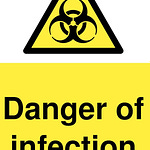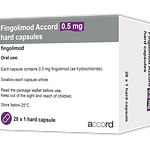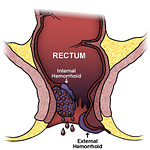This is the second in a series of MS-Selfie Newsletters on specific disease-modifying therapies (DMTs) and is part of the ongoing series of questions you need to ask, and have answered, by either yourself or your HCP, before starting a DMT.
What is the risk of not being treated with a disease-modifying therapy (DMT)?
What are the attributes of the specific DMTs or treatment strategies?
Glatiramer acetate
Natalizumab
S1P modulators
Alemtuzumab
Teriflunomide
Fumarates
Anti-CD20
AHSCT
How can I derisk or reduce my chances of getting certain adverse events on specific DMTs?
Will I be able to become a parent? What about pregnancy and breastfeeding?

Glatiramer acetate
Summary
Glatiramer acetate (GA) has been the other injectable workhorse of MS treatment for decades. It is moderately effective with only a minority of people with MS (pwMS) achieving long-term NEIDA (no evident inflammatory disease activity) and the impact on end-organ damage (brain volume loss) is only modest. In general GA formulations are relatively well tolerated in the short term with the main issues being injection site reactions, occasional flushing reactions with mild tightness of the chest, swelling of lymph nodes and rarely urticaria or hives. However, long-term use of GA leads to lipoatrophy (loss of fatty tissue under the skin). A big plus is that it has no monitoring requirements and it is safe in pregnancy. Adherence is been a problem in the long term due to injection fatigue. With more effective DMTs to choose from, with other more favourable attributes, most pwMS now tend to choose non-injectable treatments.
Despite this, there is still a role for GA in the treatment of MS, in particular in (1) women who are planning to start or extend their families, (2) as a bridging agent when someone has persistent lymphopaenia and they can’t transition to a DMT associated with lymphocyte depletion, (3) pwMS who want to derisk chronic immunosuppression, for example, in the small number of patients who develop cancer and don’t want chronic immunosuppression whilst they wait to see what happens after they have had treatment for their cancer, in older patients with immunosenescence, and patients who have had complications as a result of immunosuppression, in particular, opportunistic or other infections. There are also a large number of pwMS who are so-called legacy super-responders and have been on GA for decades and are in long-term remission and are too nervous to stop their treatment.
GA’s main characteristics
Trade Names: Copaxone-20 (Teva), Copaxone-40 (Teva), Brabio-20 (Mylan), Brabio-40 (Mylan)
Mode of action: Immunomodulatory. GA is often referred to as the DMT with 9 or more modes of action because so many different effects on the immune system have been linked to its mode of action. Importantly, none of these immunological changes is associated with immunosuppression.
Efficacy: Moderate
Class: Maintenance, immunomodulatory
Immunosuppression: No
Posology:
GA-20 (Prefilled syringe 20mg/mL sc daily)
GA-40 (Prefilled syringe 40mg/ml sc 3x per week)
Main adverse events: Injection site reactions are the most frequent adverse reactions with redness, pain, itching, swelling and rarely breakdown of the skin. WIth prolonged injecting lipoatrophy may occur. and skin necrosis. Occasionally pwMS may experience an immediate reaction post-injection with flushing, chest tightness, shortness of breath, palpitations and a rapid heart rate.
Adverse events of special interest:
Swelling of lymph nodes (pseudolymphoma)
Urticaria or hives
Neutralizing Antibodies (NAbs): No
Pharmacovigilance monitoring requirements:
Baseline: None
Follow-up: None
Rebaselining: A rebaseline MRI needs to be done after GA has had sufficient time to work. I would recommend ~7-12 months after starting treatment and to include Gd-enhancement as part of the rebaselining MRI. GA is the one maintenance DMT that takes quite a long time for it to reach maximum effectiveness on MRI. The presence of Gd-enhancing lesions on the rebaseline scan is sufficient evidence at this stage to switch/escalate treatment to another DMT.
Pregnancy: No known reproductive toxicity. Generally considered to be safe in pregnancy. In case of unplanned pregnancy on GA termination of the pregnancy is not necessary. Most neurologists are recommending continuing GA treatment throughout pregnancy.
Breastfeeding: Safe, not contraindicated.
Male Fertility: Safe
Vaccination: Safe
Summary of Product Characteristics (SmPC): Copaxone-20, Copaxone-40, Brabio-20, Brabio-40
Switching
GA-20 to GA-40 switch: PwMS may switch between GA preparations as a result of local skin reactions. GA-40 is only administered 3x per week and has been shown to be better tolerated than the daily GA-20 formulation.
Lack of efficacy: I would not recommend switching between GA preparations because of lack of efficacy or perceived lack of efficacy. If you have had a suboptimal response to one GA preparation it would make sense to switch classes. In general, I tend to escalate treatment rather than switch to another moderate efficacy DMT.
Other DMTs: Provided the baseline screening blood tests are fine and there are no specific contraindications I see no reason why GA can't be used after any of the other licensed DMTs. However, if you are switching due to a suboptimal response I would recommend a more efficacious DMT. There is reasonable real-life data that shows switching upwards (escalation) gives a better overall response rate than switching to a similar efficacy DMT (horizontal switching). I suspect that most pwMS who switch to GA will be doing so for family planning reasons because GA probably has the best safety record in pregnancy. Another reason to switch may be an adverse event on another DMT, for example, a persistent lymphopaenia.
Special circumstances: The presence of other specific comorbidities may make it difficult to switch from certain DMTs to GA. These could include generalised urticaria or a known allergic reaction to GA in the past.
Subscriptions and donations
I am using the paid subscriptions to administer the MS-Selfie Newsletter and associated MS-Selfie microsite that is currently in development. If you are an active paying subscriber thank you, your contribution is much appreciated. At the request of several readers, I have now added the option of making a one-off donation as well. Funds from subscriptions and donations are being used to pay a professional medical writer to curate, rewrite and transfer the contents of the Newsletter onto a companion MS-Selfie microsite, which is being designed and maintained by a freelance web designer.
Thank you.
General Disclaimer: Please note that the opinions expressed here are those of Professor Giovannoni and do not necessarily reflect the positions of Barts and The London School of Medicine and Dentistry nor Barts Health NHS Trust. The advice is intended as general advice and should not be interpreted as being personal clinical advice. If you have problems please tell your own healthcare professional who will be able to help you.














Is there still a role for glatiramer acetate in the management of MS?